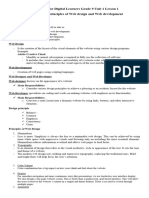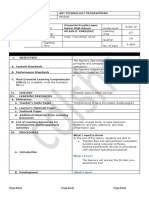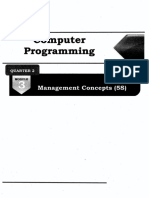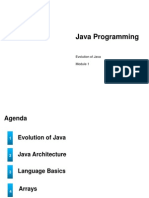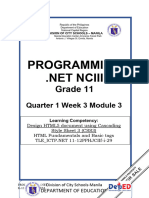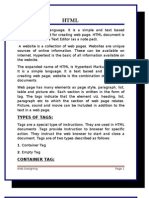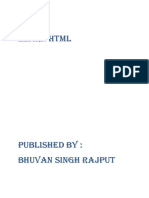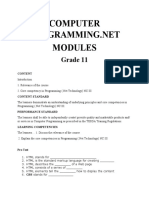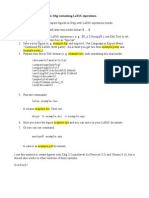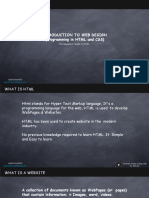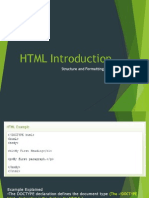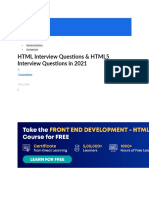0% found this document useful (0 votes)
598 views65 pages11 Q1 Week3 No Answer
This document provides an HTML module for a Grade 11 programming class. It covers the basics of HTML, including key elements like <html>, <head>, <title>, and <body>. It discusses HTML tags for formatting text, headings, paragraphs, lines, and more. Activities at the end ask students to rearrange HTML tags into the proper structure and create a simple webpage displaying the DepEd vision statement.
Uploaded by
Antonio D. MontemayorCopyright
© © All Rights Reserved
We take content rights seriously. If you suspect this is your content, claim it here.
Available Formats
Download as RTF, PDF, TXT or read online on Scribd
0% found this document useful (0 votes)
598 views65 pages11 Q1 Week3 No Answer
This document provides an HTML module for a Grade 11 programming class. It covers the basics of HTML, including key elements like <html>, <head>, <title>, and <body>. It discusses HTML tags for formatting text, headings, paragraphs, lines, and more. Activities at the end ask students to rearrange HTML tags into the proper structure and create a simple webpage displaying the DepEd vision statement.
Uploaded by
Antonio D. MontemayorCopyright
© © All Rights Reserved
We take content rights seriously. If you suspect this is your content, claim it here.
Available Formats
Download as RTF, PDF, TXT or read online on Scribd
/ 65






